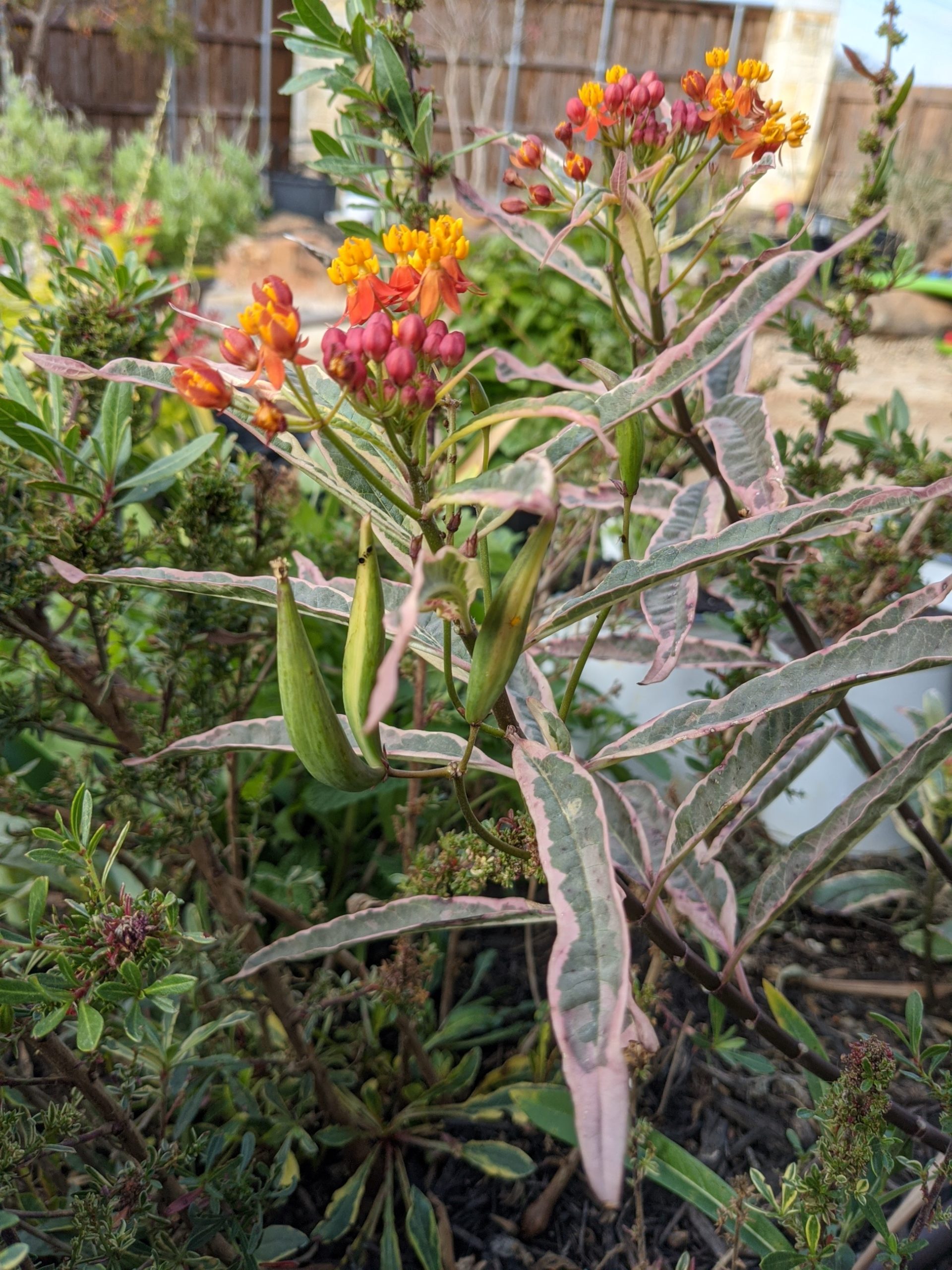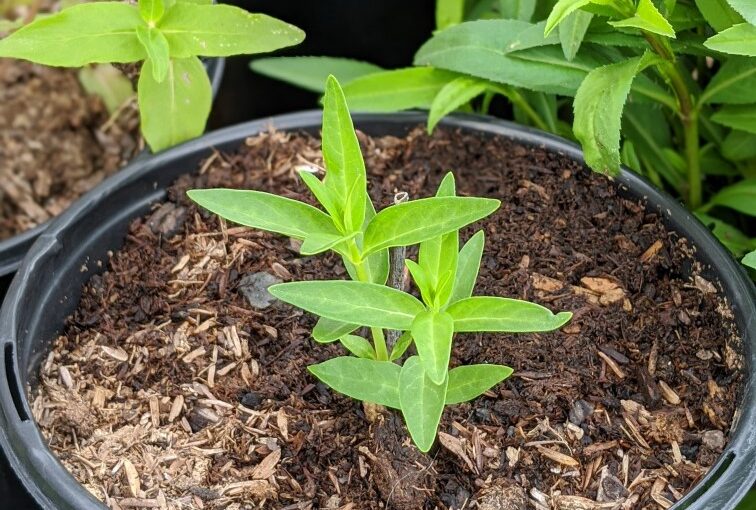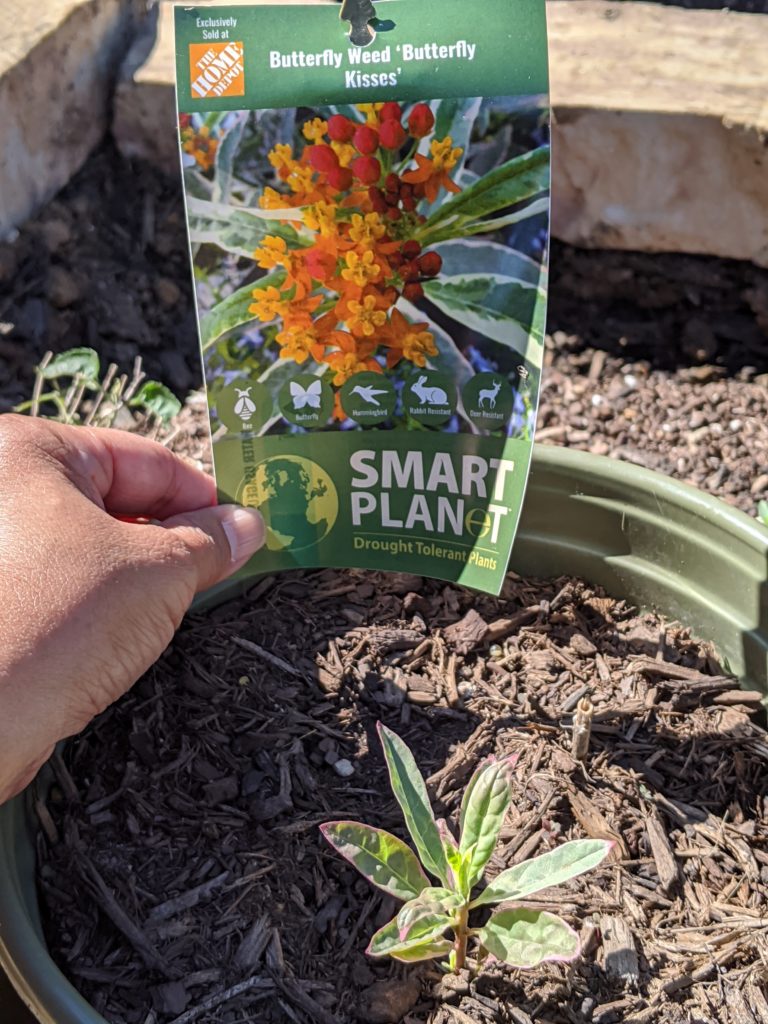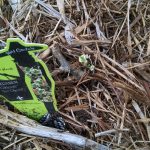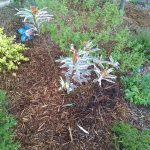I spotted these seed pods on my variegated milkweed, Asclepias curassavica Monarch’s Promise aka Butterfly Kisses, in late November. This is the first year I’ve seen seed pods on my milkweed and I was highly anticipating seeds from this variety.
My previous attempts to propagate this milkweed from cuttings have ended in failure, and I just want to avoid buying replacement plants next year. The fact that this specific plant is a survivor from a May 2019 purchase makes me want to preserve it even more.
I placed small ziplock snack bags over the pods in hopes of capturing seeds when the pods ripened and burst open.
Alas, it took only one frigid night in December to damage the top growth of the plant and render my collection efforts futile.

Needless to say, I was disappointed to find a pod branch had simply dropped off the plant. I expected the rest of the pods would follow, so I removed them all.
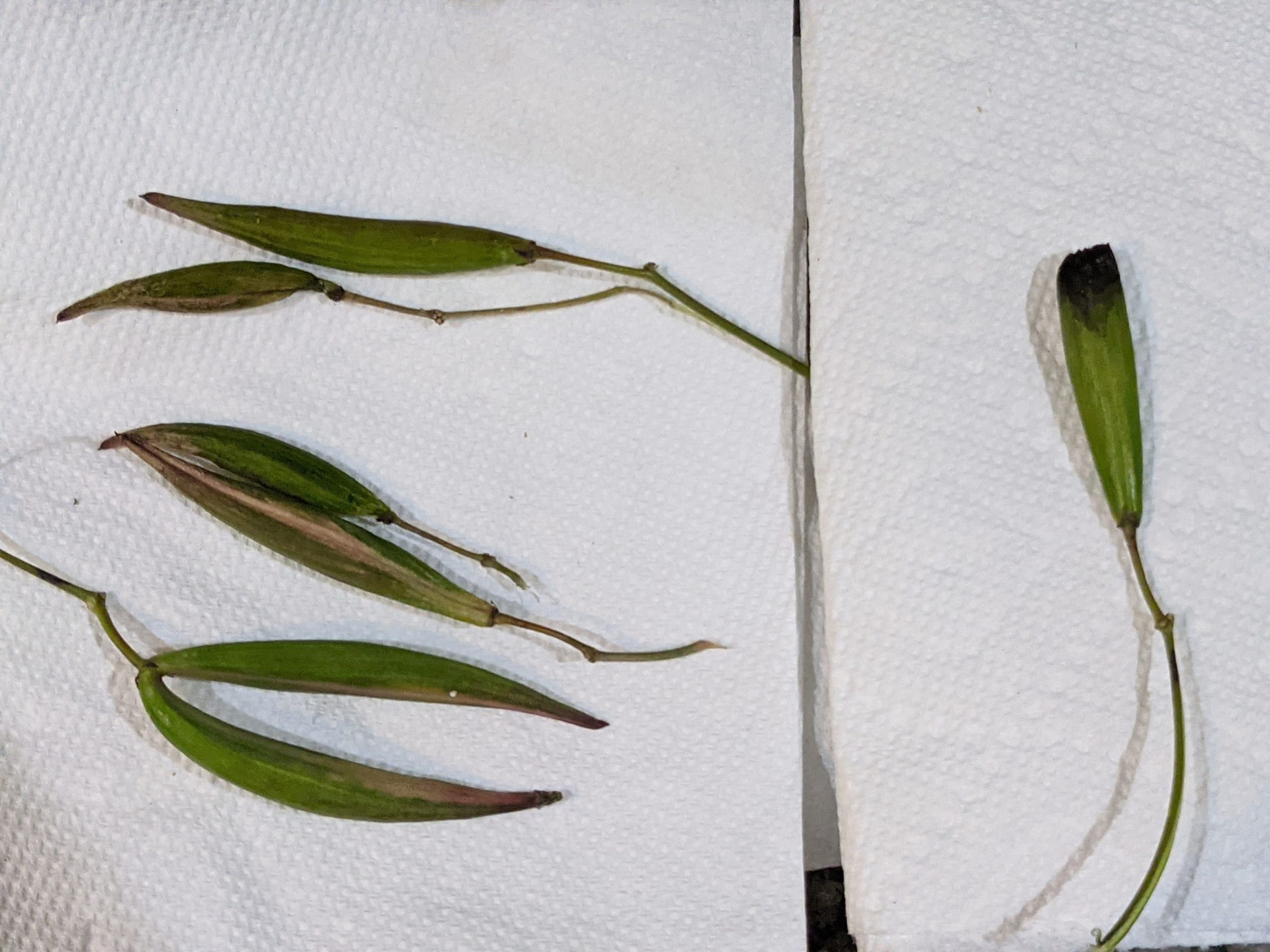
I don’t know if I can collect seeds from these green pods if I let them mature and dry out like some fruits. Google search hasn’t yielded answers on this subject. So I’ll just sit them out on a counter and see what comes of it.
